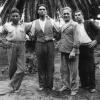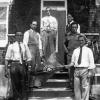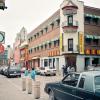The first Azorean immigrants arrived in Montréal in 1953 and 1954. Their first-hand accounts tell about their reasons for leaving the islands, the voyage they undertook, and the problems they encountered upon arrival.
The first Azoreans immigrants came to Montréal in the 1950s. Their stories of their early years describe their first work experiences and the family and administrative challenges they faced, but also the birth of a community.
Today’s Chinatown faces pressing urban development challenges. A number of groups are working to make the neighbourhood a good place to live—and one that proudly displays its cultural heritage.
Since its beginnings, Montréal’s Chinese community has repeatedly mobilized against racism and xenophobia. Today, it is speaking out once again—this time against gentrification, anti-Asian racism, and intolerance.
Cantonese opera and contemporary art exhibitions are among the highlights of the rich history of Chinese visual and performing arts in Montréal.




